Surprisingly, scientific studies examining the prevalence and type of injuries present in (indoor) rock climbing demonstrate that more than fifty percent of climbers training in gyms are injured each year. Repetitive strain or overuse injuries account for the majority of these occurrences, with acute muscle pulls and strains coming in second. Injuries can occur anywhere in the body, but most often occur in the upper extremities including hand, forearm and shoulder. It is also clear that individuals climbing at a high level and frequently are more likely to sustain these injuries.
So, how does this affect you as a climber?
The high rate of injury and overuse may be related to poor training habits and lack of knowledge pertaining to proper climbing warm ups. In the gym I often see climbers extensively stretching their forearms and swinging their arms in circles in an attempt to prepare their bodies for their next climb. Such activities are not likely good strategies to prepare our muscles, ligaments and joints for the stress of climbing.
Current research has determined the safest way to stretch prior to performance; static stretching is “out” and dynamic stretching is “in”.
What does this look like?
In a dynamic stretch, short bouts of steady stress are placed on a muscle through full range with brief holds in stretch position followed by either gentle contraction or light movement back through the shortened range. Complete eight to ten repetitions of this type of stretch for each joint involved. Gently begin climbing, using your arms through their full range of motion while increasing stress and contraction strength.
After completing dynamic stretching, I begin by climbing at least two easy full length top rope climbs or three to four easy boulder problems. Following this, I steadily move through harder grades. Remember, don’t warm up and climb a hard grade thinking you will have a better shot at it while you feel fresh! Most likely you will perform poorly since your muscles are not ready to produce maximal effort. A good warm-up increases blood flow to muscles, the speed of nerve impulses, and oxygen and energy delivery.
Additionally, varying your workout routines, such as cross training and strengthening to maintain good core and shoulder strength are crucial ways to ensure you will be injury free. This workout variation decreases specific overuse injuries caused from lack of variation in stress to different muscle and joint tissues. However, if you do end up injured despite good warm up and routine practices, remember that for healing to occur an acute injury must settle and stabilize. Avoid aggravating activity while your tissue heals, and then regain the tissue’s original strength and possibly more if the injury was a result of tissue weakness.
Climbing injury free is possible!
It takes self control to train and cross train appropriately, enough information to know when to stop and heal, and consistency to safely maintain loads to the tissues stressed while climbing. Recovery after workouts can take anywhere from a few hours to a few days, and static stretching using prolonged holds is appropriate following your workouts to maintain muscle length and comfort.
If you are having trouble with ongoing injuries or feel that your body is limiting you from improving, check in with us at SOL Physical Therapy.
We can help you assess your your injuries and prevent future ones by developing recovery plan that safe, effective and will help you to reach your peak performance.


